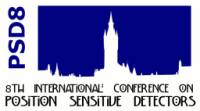Speaker
Dr
Alireza Sadrmomtaz
Description
The technique of positron emission particle tracking (PEPT) was developed at the Birmingham University and has proved an extremely powerful tool for studying flow processes inside real laboratory-scale process equipment. In PEPT, a single radioactively-labelled tracer particle is tracked by detecting simultaneously. Routine studies use the ADAC Forte positron camera consisting of two planner gamma camera heads each containing a crystal of sodium iodide 50*40 cm2 and 16 cm thick operated in coincidence. Recently the University of Birmingham has acquired the ECAT scanner consists of 32 detector buckets. Each bucket comprises 4 bismuth germanate crystals each subdivided into an 8x4 array of small detecting elements, so that in total the scanner consists of 8 rings each of 512 elements. This paper presents the initial comparison between the ADAC and ECAT scanner data obtained from the PEPT algorithm. For the stationary point source, the precision in location will be approximately 10 times better than obtained with the ADAC camera. Fast moving particles with speed of 2 m/s can be located with an accuracy of 2mm while the corresponding value is found 0.6mm for ADAC camera. Since for PEPT 3D operation is better and the septa couldn't easily be removed from the ECAT 931 gantry so it is suggested that the configuration of the detector to be changed into a new frame.

